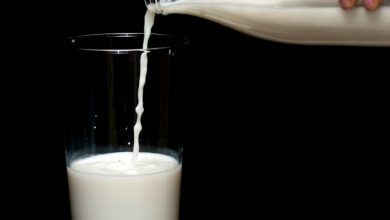
Not All Calories are Made the Same
In the human system there is more than meets the eye when it comes to calories
To lose fat, eat fewer calories than you burn. This advice seems self-evident, but if it were really that simple, there would not be a weight loss industry, and there certainly would be no reason for CuttingCalories.com.
The problem with the eating fewer calories than you burn equation is that, unlike a car that uses gasoline, the human body is a much more complex organism. Cars are complicated, but they run on basic principles of physics. Human bodies, on the other hand, are complex. The difference between complex and complicated systems is a growing area of research in the United States, but the basic principles are the following: complicated systems operate on only a few, easily measured variables of physics; complex systems operate outside of physics, with many, if not countless, variables and feedback loops.
This brings us back to the purpose of this website. Calories in vs calories out is a principle of thermodynamics in physics. While it might be necessary for weight loss, just counting calories consumed vs spent is not enough to guarantee that weight will be lost. Even worse, cutting calories in the wrong manner will set a person up for future fat and weight gain thanks to a slower metabolism. Follow up studies on contestants that took part in the Biggest Loser TV show showed that the starvation diet and hard workouts had dramatically slowed down the metabolism of former contestants. Few people were able to keep the weight loss.
In short, while cutting calories is perhaps a necessary part of losing unwanted weight, how those calories are cut is extremely important for both short and long-term fat loss success.
The Core Assumption of Cutting Calories
The idea that to lose weight, a person must burn more calories than they consume, stems from the second law of thermodynamics in physics. The second law is as follows: “the state of entropy of the entire universe, as an isolated system, will always increase over time. The second law also states that the changes in the entropy in the universe can never be negative.” In simple terms, this means that energy dissipates over time.
A car is an isolated system, and it uses the calories found in gasoline to turn that energy in the fuel into work. But no matter how good the car becomes, it can never turn 100 percent of the fuel into work. There will always be some loss in the conversion of fuel into work.
When early nutritionists started scientifically studying the human body and metabolism, those scientists turned to the laws of physics and tried to apply them to humans and the food that they ate. At the time, a calorie was defined by how much energy was needed to heat water from different types of coal in the use of steam engines. But nutritionists realized that they could use the methods of the French scientist Nicolas Clément for measuring calories of coal heat for measuring energy in food.
Using a method developed for understanding the energy of fuel sources in coal became standard for that of food. For example, burning sugar produces more heat than kale, so it is clear that sugar has more calories compared to kale. The calorie can be measured by tracking how much burning food it takes to heat a certain amount of water one degree. Early nutritionists assumed that food worked like coal in a steam engine – the only variable was how many calories were in each type of food. This philosophy of food energy density is still the foundation of all nutritional science; however, in its simplification, it omits import details.
Simply, food was treated as any type of fuel. To scientists, gasoline and food were just different energy sources but functioned the same. This belief that calories in must be greater than calories out rests on the second law of thermodynamics.

Humans are Not Cars
Of course, living things are not simply mechanical machines like cars. Despite the simple fact that life is not an isolated system, there has been little to discourage the use of the second law of thermodynamics in weight loss philosophy.
The assumption that humans are isolated systems is wrong. Humans can use many different types of fuel sources, including breaking down the human body to gain more fuel when needed. Humans can also store excess energy for times when it is needed. Cars do not have this ability to store or recycle itself to produce the fuel and nutrients needed to survive.
Again, complicated systems work on the laws of physics. Biology works on the rules of complex systems. Yet the two are often confused by leading nutritionists in the world.
Not all Calories are Made the Same
Because our bodies respond differently to every type of food we eat, we can not say that all calories are created equal. 100 calories of sugar will get a different reaction from our bodies than 100 calories of steak.
The simple fact that our bodies treat types of calories differently is the main problem with using the second law of Thermodynamics for weight loss. The signals that food sends to our bodies make a huge difference for weight gain and for weight loss. In the long run, the sheer number of calories may make a difference in weight, but it will not just be for fat.
On Metabolism
One of the key concepts of the calories in and calories out concept is that, while it might be possible to starve ourselves into weight loss, our body feels the stress of starvation and starts to preserve calories at any cost. This saving of calories in the body means our metabolism slows down. Starvation is not a sustainable process, and worse, when people do start to eat more after losing weight, they will often gain it back, plus additional fat.
But there is more to eating than just diet; one reason the metabolism slows down is due to a lack of protein and animal fats. Protein is the building block for the human body, and unlike herbivores, we lack the basic gut and microbes to build proteins from most plant matter. A diet that is low in protein and calories will lead to weight loss, but a significant amount of the weight loss is muscle, and this loss of lean muscle mass lowers our metabolism.
The trick of cutting calories while keeping metabolism raised is again presented by Gary Taubes in his book Good Calories, Bad Calories:
“We have thrifty metabolisms when are undernourished and so need to use efficiently every calorie we consume, and we have spendthrift metabolisms when we’re over-nourished, so as to avoid excessive weight gain and obesity. Our cells may have certain maximal or ideal capacity for metabolizing nutrients, but the amount that they actually metabolize is ultimately determined by the quantity and perhaps the quality of the nutrients delivered in the circulation. This determination is made on a cellular and hormonal level, not a cognitive or conscious one.”
In short, what Taube’s is arguing is that, if our bodies are well-nourished with nourishing calories, our metabolisms will increase without storing the excess calories as fat. We burn those calories up in excess heat or more energy. But if we are starved of nutrients, our bodies will work hard to save the remaining nutrients that it has in its system and lower the metabolism.

All Diets Say the Same Thing
What is striking about modern eating habits in developed nations, is that nearly every diet that removes processed carbs and sugars shows quick weight loss in fat. Polar opposite diets such as veganism and carnivorism both show great short term results of fat loss, mostly because both require that processed carbs and sugars are removed.
What remains unclear is if it is possible for humans to lose weight even if they are consuming more calories than they are burning. But to conduct such a study would be impossible because the body adjusts its metabolism to food intake, and everybody is different.
CuttlingCaloires.com is committed to chronicling the evidence and research. There is much we do not understand about the human body, and because it is a complex system, any results discovered will vary from person to person.
But there are lessons that can be gleaned from research and observation. Avoiding processed foods and carbs is an agreed starting point. The ways to avoid excess body fat accumulation and stay lean are nearly endless.



